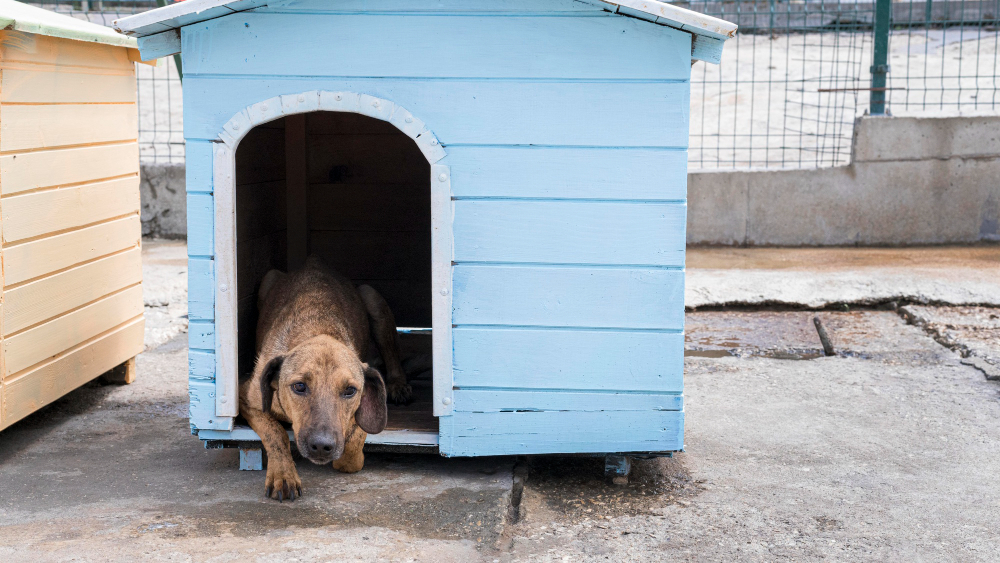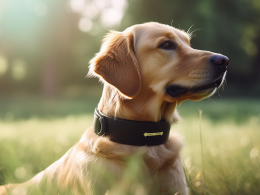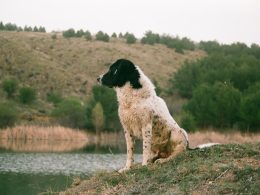Having a good kennel floor is critical since dogs tend to be filthy, and you want to make cleaning up as simple as possible for them. If your floor is tough to clean, leaks, or is porous, you will have difficulty keeping it clean daily.
You’ll have to put your pet in kennels when you take him to a veterinarian’s, doggy daycare, pet grooming, retraining, or boarding facility. Furthermore, animal shelters and breeders, as well as the military and defense, employ these to house their animals.
If you have an outside kennel, you may question why you can’t just use grass as a floor. Soil harbors canine parasites like hookworm and giardia and is unclean under damp conditions, making it unsafe for dogs to play in.
The advantages of modular flooring for kennels are the same as those of other modular floor kinds. Custom kennel designs are made simple, with the ability to cut panels to any desired size. To avoid costly mistakes, you should always measure twice and cut once when working with modular panels.
Vinyl flooring is noted for its scratch resistance and ease of cleaning. Even so, it’s prone to slipping when wet, and the firm surface may be uncomfortable for your dog to lie on.
Alternatively, your pet may find lying on rubber flooring a much more pleasant experience. A well-designed system also has the potential to produce good drainage. Dogs, on the other hand, can eat rubber mats that are too thin.
What Is the Best Base for a Dog Run?
Allowing your dog to run outside in a safe environment is a terrific way to give them exercise and entertainment. However, your dog’s safety and convenience of cleaning will be impacted by the type of flooring you choose for your dog’s outdoor run.
The humblest and cheapest option is to use dirt or grass. You won’t have to pay for anything if you use what’s already there. However, there are several drawbacks, such as difficulty keeping your dog clean. In addition, if it rains, the grass and dirt will turn muddy, and you’ll have to do extra work to maintain it.
On the other hand, synthetic grass looks like natural grass but is easier to clean and requires less maintenance. However, a hotter climate can make this uncomfortable. In addition, it can cost between $2 to $8 per square foot and an additional $6 to $20 per square foot in installation costs.
Traditional dog runs may use materials like gravel, stone, or sand, although this is not recommended. Also, if you stay in a hot climate, you should avoid using this type of flooring because it is challenging for your dog to walk on.
Limestone that has been crushed and compacted into a level surface is another possibility. Because of its natural lime qualities, it can help keep pee and feces odor-free in any climate. In addition, it doesn’t get as hot in the summer as other sorts of rocks do—crushed limestone costs between $1.25 and $1.80 per square foot.
What Are 2 Materials That Could Be Used for The Walls of a Dog Kennel?
You can build a dog kennel out of just about anything, but some materials are more suited to your environment and your dog’s disposition than others. Wood and plastic are the most typical building materials for dog kennels.
Building foundations may be expensive, especially if additional insulation and waterproofing are required. In addition, materials like metal and concrete can be tough to work with if you don’t have prior knowledge.
Most instructions utilize lumber as an example since lumber is the most commonly used material. Since wood is versatile, it’s also easier to work with and can be used in almost any environment.
Wood’s main drawback is that it rots. Even if you treat the doghouse regularly, it will eventually succumb to the elements. Wood dog kennels can be drafty depending on the thickness of the wood used, although this can be avoided to a significant extent by proper construction.
An outdoor dwelling can benefit significantly from the advantages of plastic, which is both incredibly lightweight and impervious to water. Plastic, like wood, can’t be eaten by termites, but if your dog is a chewer, choose a potent substance in both plastic and wood.
Insulation is the primary drawback of plastics. Even though it is thick, the material does not provide adequate insulation. In addition to being flimsy, plastic isn’t fantastic for large dogs because it can easily break or bend.
It all depends on where you reside and the materials you use for your dog kennel. Pre-insulated panels for the dog home and barrier and insulation products can be purchased.
How Many Bags of Concrete Do I Need for a 10×10 Kennel?
Because of the large volume, it is advisable to utilize 80 lb. bags of concrete. The number of bags you’ll need depends on how thick your 10×10 slab is.
Concrete is an excellent choice if you want to build a long-lasting doghouse. It is an extraordinarily flexible and durable building material that will outlive most other options. In terms of doghouses, it may be too much, but if you have numerous dogs that need to be housed outside, it’s perfect.
- You may need to employ a professional if you’ve never worked with concrete before. In addition to being more expensive than wood or plastic, mixing, pouring, and setting requires more time and effort. If your walls are thick enough, concrete can provide adequate insulation, but the floor can freeze if you don’t add additional bedding or raise the flooring.
- You may have to pay a minor fee if you need less than 5 yards of concrete from a concrete company. So, if your project calls for fewer than 5 yards of concrete, you’ll have to weigh the cost of purchasing more concrete against the time and effort involved in handling and mixing it all.
- However, even a dog won’t damage if the concrete is made with the proper mix design. For those unacquainted with the ins and outs of the concrete industry, it might be challenging to know which method to employ when it comes to making concrete.














